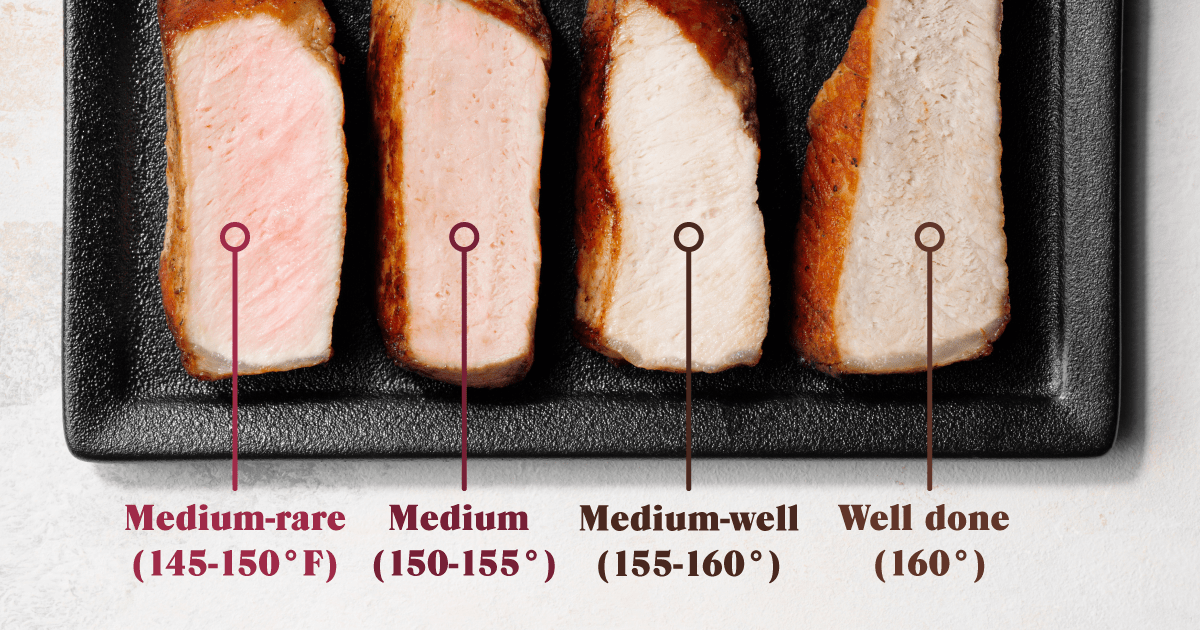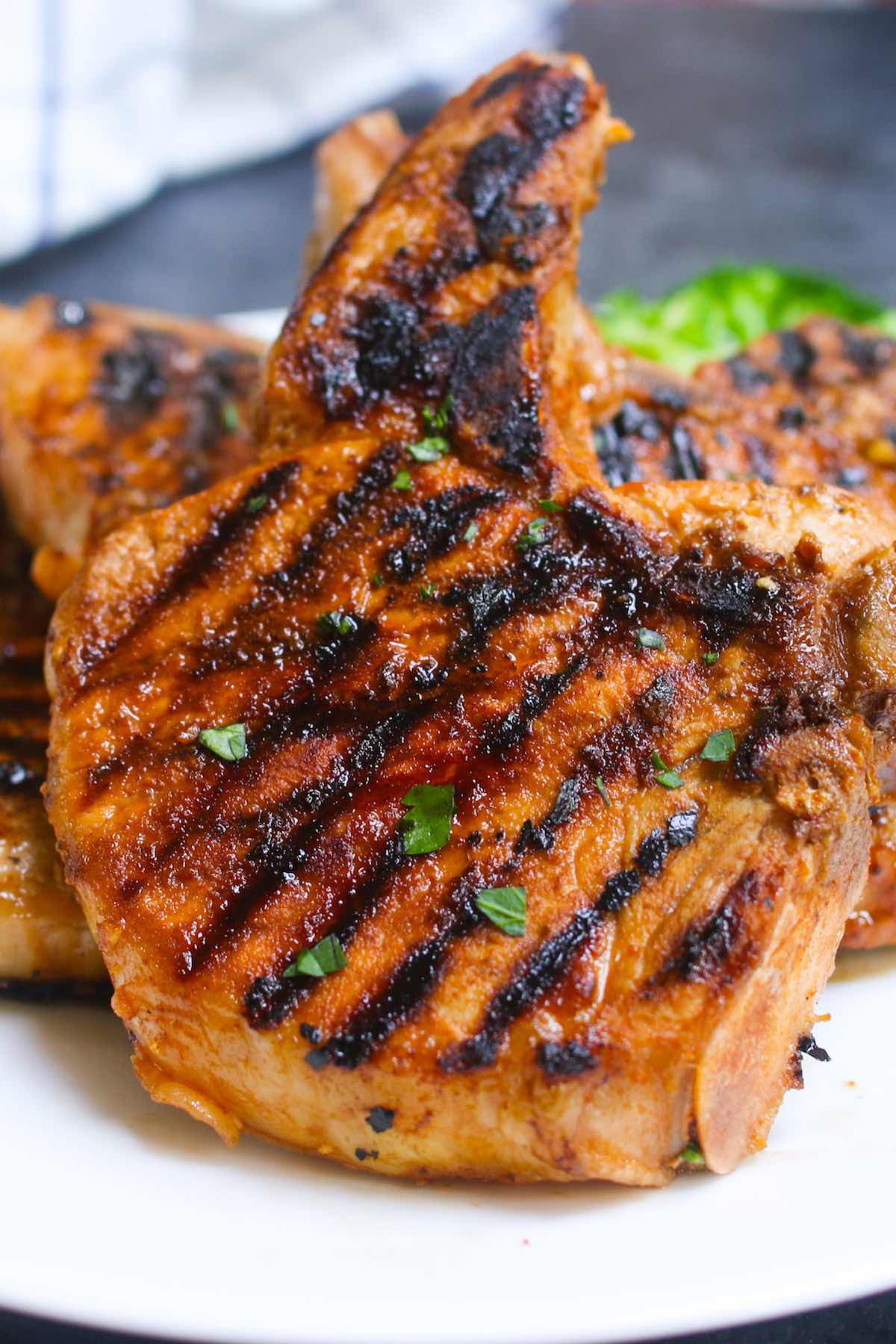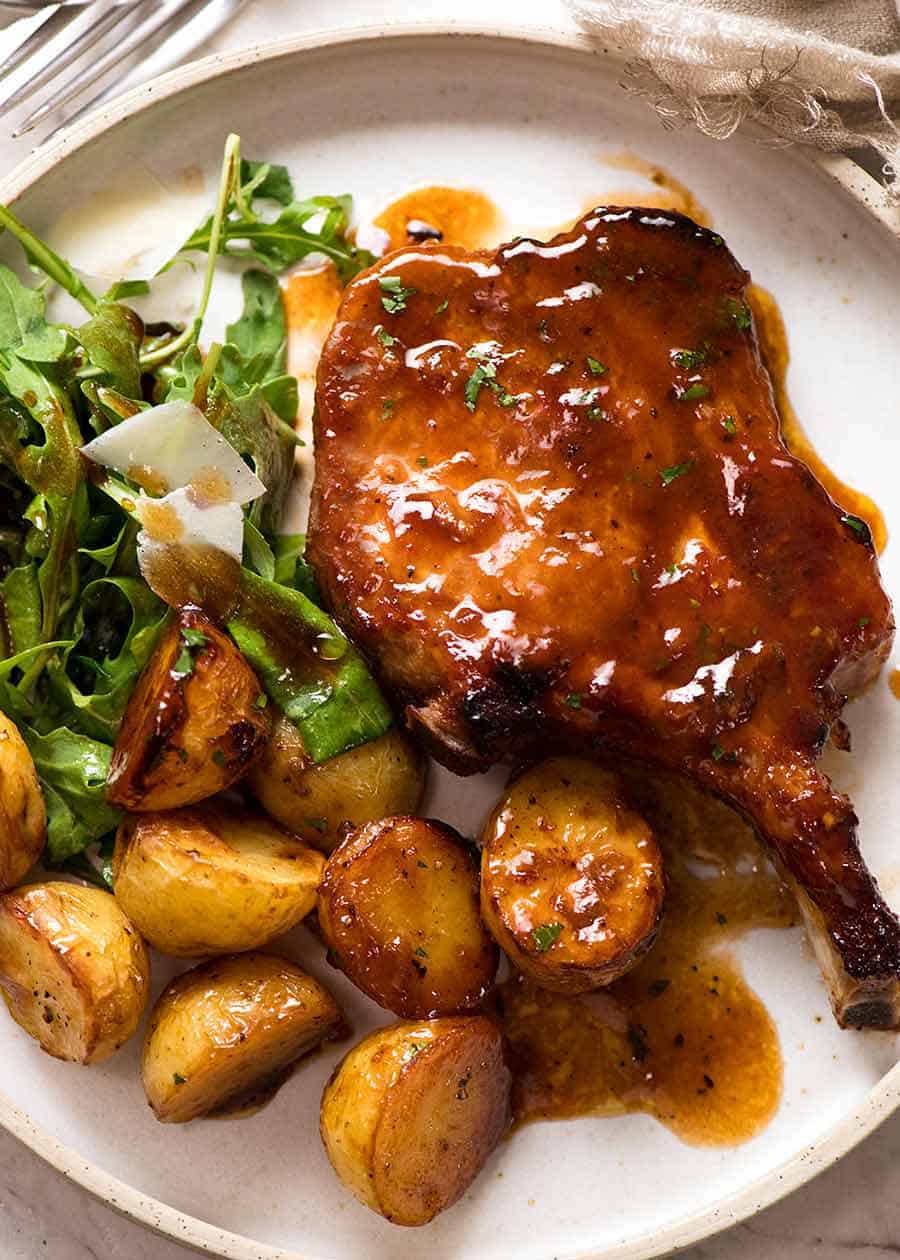What Temp For Pork Chop: A Comprehensive Guide To Perfectly Cooked Pork
When it comes to cooking pork chops, understanding the ideal temperature is crucial to achieve a delicious, juicy, and safe-to-eat result. Many home cooks struggle with the question, "What temp for pork chop?" and often end up with dry or undercooked meat. Proper temperature control not only ensures flavor and texture but also guarantees food safety. Whether you're a seasoned chef or a cooking beginner, this guide will provide all the information you need to master pork chop cooking temperatures.
Temperature plays a significant role in the cooking process of pork chops, affecting both the taste and safety of the dish. Overcooking or undercooking can ruin the experience, which is why precision is key. We'll explore the ideal temperature range for pork chops and share tips to help you achieve perfection every time.
In this article, we'll delve into the science behind pork chop cooking temperatures, provide step-by-step instructions, and include expert tips to help you cook pork chops like a professional chef. Let's dive in and answer the question: What temp for pork chop?
Read also:Mastering The Art Of White Bean Chicken Chili Giada A Flavorful Culinary Journey
Table of Contents
- What is the Perfect Temp for Pork Chop?
- Food Safety Guidelines for Cooking Pork
- Cooking Methods and Temperature
- Using a Meat Thermometer
- The Importance of Rest Time
- Different Types of Pork Chops and Their Cooking Temp
- Bone-In vs. Boneless Pork Chops
- Thick vs. Thin Pork Chops
- Pan-Seared Pork Chops
- Grilled Pork Chops
- Baked Pork Chops
- Air Fryer Pork Chops
- Tips for Juicy Pork Chops
- Conclusion: Master the Art of Pork Chop Cooking
What is the Perfect Temp for Pork Chop?
According to the USDA (United States Department of Agriculture), the minimum safe internal temperature for pork chops is 145°F (63°C), followed by a three-minute rest period. This temperature ensures that the pork is cooked safely while maintaining its juiciness and flavor. However, many chefs and home cooks prefer to cook pork chops slightly higher, around 150°F (66°C), for a more well-done texture.
It's important to note that cooking temperatures can vary depending on the cut, thickness, and method used. For instance, thicker pork chops may require a longer cooking time to reach the desired internal temperature, while thinner cuts can cook more quickly.
Food Safety Guidelines for Cooking Pork
Food safety should always be a top priority when cooking pork. Raw pork can harbor harmful bacteria such as Salmonella and Listeria, which can cause foodborne illnesses if not cooked properly. Here are some essential food safety tips:
- Always wash your hands before and after handling raw pork.
- Use separate cutting boards and utensils for raw and cooked meat to prevent cross-contamination.
- Refrigerate leftover pork within two hours of cooking.
- Ensure the internal temperature reaches at least 145°F (63°C) before serving.
By following these guidelines, you can enjoy delicious pork chops without worrying about food safety issues.
Cooking Methods and Temperature
There are several methods to cook pork chops, each with its own temperature requirements. Below, we'll explore the most popular methods and the ideal temperatures for each:
Bone-In vs. Boneless Pork Chops
Bone-in pork chops tend to cook more evenly and retain moisture better than boneless chops. However, boneless chops cook faster and are easier to handle. Regardless of the type, the internal temperature should reach 145°F (63°C) for safety and tenderness.
Read also:Hdhub4u 18 Plus Your Ultimate Guide To Understanding And Exploring
Thick vs. Thin Pork Chops
Thicker pork chops require a lower and slower cooking method to ensure even cooking. Thin pork chops, on the other hand, can be cooked quickly over high heat. Adjust your cooking time and temperature based on the thickness of the chops.
Using a Meat Thermometer
A meat thermometer is an essential tool for ensuring your pork chops are cooked to perfection. Insert the thermometer into the thickest part of the chop, avoiding the bone if present. For accurate readings, use an instant-read digital thermometer, which provides precise measurements in seconds.
The Importance of Rest Time
After cooking, allow the pork chops to rest for at least three minutes. This resting period allows the juices to redistribute throughout the meat, resulting in a juicier and more flavorful chop. Cover the chops loosely with foil to keep them warm during the resting period.
Different Types of Pork Chops and Their Cooking Temp
Pork chops come in various cuts, each with its own cooking requirements. Here's a breakdown of the most common types and their ideal temperatures:
- Center-Cut Pork Chops: Cook to 145°F (63°C).
- Ribeye Pork Chops: Cook to 145°F (63°C) for medium-rare.
- Sirloin Pork Chops: Cook to 150°F (66°C) for a firmer texture.
Pan-Seared Pork Chops
Pan-searing is a popular method for cooking pork chops. Start by heating a heavy-bottomed skillet over medium-high heat. Add a small amount of oil, then sear the chops for 3-4 minutes per side, depending on thickness. Use a meat thermometer to ensure the internal temperature reaches 145°F (63°C).
Grilled Pork Chops
Grilling adds a delicious smoky flavor to pork chops. Preheat your grill to medium-high heat and cook the chops for 4-6 minutes per side. Remember to check the internal temperature to ensure they are cooked safely.
Baked Pork Chops
Baking is a hands-off method that results in evenly cooked pork chops. Preheat your oven to 375°F (190°C) and bake the chops for 20-25 minutes, or until the internal temperature reaches 145°F (63°C).
Air Fryer Pork Chops
The air fryer is a convenient option for cooking pork chops. Preheat the air fryer to 375°F (190°C) and cook the chops for 10-12 minutes, flipping halfway through. Use a meat thermometer to confirm the internal temperature.
Tips for Juicy Pork Chops
Here are some additional tips to help you cook juicy and flavorful pork chops:
- Marinate the pork chops for at least 30 minutes to enhance flavor and tenderness.
- Season generously with salt and pepper before cooking.
- Avoid overcrowding the pan or grill, as this can lead to uneven cooking.
- Let the pork chops come to room temperature before cooking for more even heat distribution.
Conclusion: Master the Art of Pork Chop Cooking
Cooking pork chops to the perfect temperature is an art that combines science and culinary expertise. By understanding the ideal temp for pork chops and following the guidelines outlined in this article, you can consistently produce delicious and safe-to-eat results. Remember to use a meat thermometer, allow for rest time, and experiment with different cooking methods to find your favorite.
We encourage you to share your pork chop cooking experiences in the comments below. If you found this article helpful, please consider sharing it with your friends and family. For more cooking tips and recipes, explore our website and discover new ways to elevate your culinary skills.


